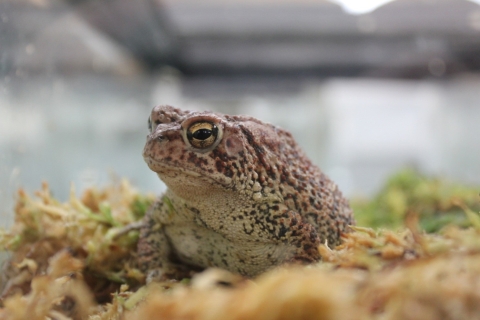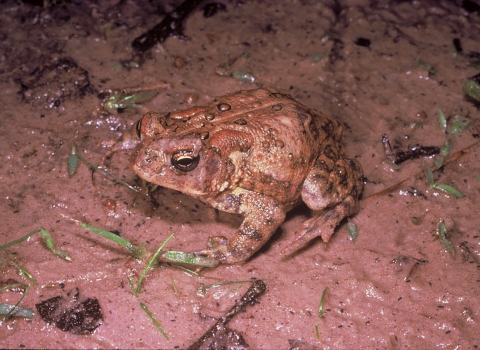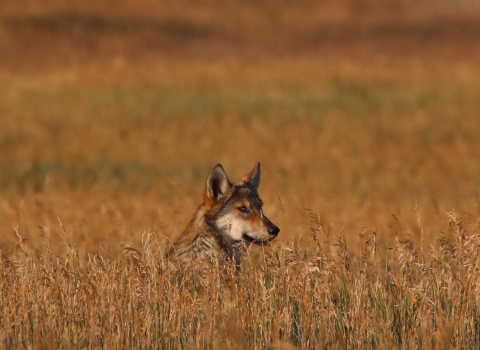The U.S. Fish and Wildlife Service is announcing the availability of a revised recovery plan for the Houston toad, one of the first amphibians to be protected under the Endangered Species Act and one of Texas’ most critically endangered species.
“Collaborating with partners including the Texas Parks and Wildlife Department, Houston Zoo, Dallas Zoo, Fort Worth Zoo, local municipalities, and private landowners, we are continuing to build a road to recovery for the Houston toad,” said Amy Lueders, the Service’s Southwest Regional Director. “By implementing actions identified in the recovery plan we can improve the status of the toad as well as the ecosystems upon which they depend.”
While they are not regulatory, recovery plans provide a framework for the recovery of a species so that Endangered Species Act protection is no longer necessary. The revised recovery plan describes actions that are considered necessary for recovery of the Houston toad, establishes delisting criteria and estimates the time and cost to implement recovery actions for the species.
The Houston toad was listed as an endangered species in 1970 and the original recovery plan for the Houston toad was approved in 1984. This revised recovery plan represents the first revision of the 1984 plan and considers updated information on Houston toad biology, population status, and threats.
The Houston toad is a small, greenish-brown, speckled amphibian that can be distinguished from other toads by its unique high-pitched, trill-sounding call that males emit during breeding choruses each spring. Habitat loss in the form of destruction, modification, and curtailment have long been considered the most significant and immediate threats facing the Houston toad, which occurs mostly on privately owned property in nine counties, including Bastrop, Burleson, Lee, Leon, Milam, Robertson, Austin, Colorado, and Lavaca.
Several efforts are already underway to conserve the Houston toad and its habitat. The Service and The Texas Parks and Wildlife Department have worked with non-federal landowners to manage the Houston Toad Safe Harbor Agreement, a voluntary agreement involving private or non-federal landowners whose actions will help contribute to the toad’s recovery. In addition, populations of Houston toad are boosted through efforts of captive breeding programs by the Houston Zoo, Fort Worth Zoo and the Dallas Zoo.
Successful recovery efforts will continue to involve cooperation among federal, state, and local agencies, private entities, and other stakeholders. Downlisting of the Houston toad can be considered when a total of 30,000 acres forested habitat is conserved and protected from future development to minimize habitat destruction, modification, and fragmentation; and when two or more recovery units have established Houston toad metapopulations, each consisting of at least three interconnected subpopulations.
The Houston toad recovery plan can be found online at: https://ecos.fws.gov/ecp/species/2206.
America’s fish, wildlife, and plant resources belong to all of us, and ensuring the health of imperiled species is a shared responsibility. We’re working to actively engage conservation partners and the public in the search for improved and innovative ways to conserve and recover imperiled species.



